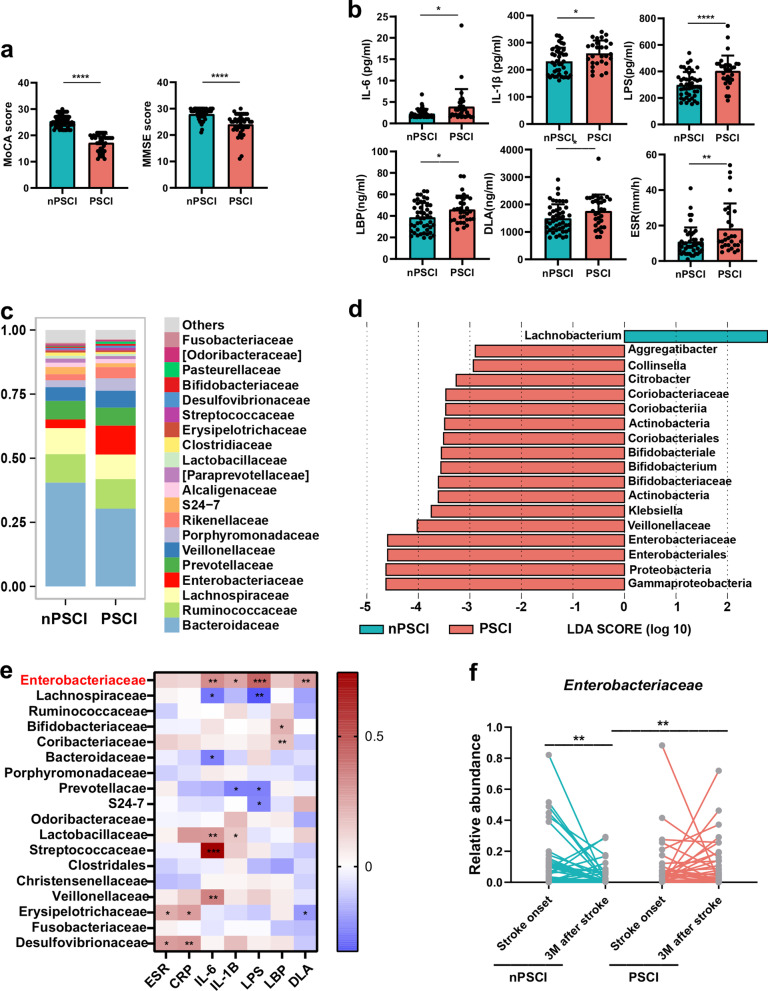Fig. 1.
PSCI patients exhibit excessive peripheral inflammation and increased abundance of Enterobacteriaceae. a Mini-Mental State Examination (MMSE) and the Montreal Cognitive Assessment scale (MoCA) score between poststroke cognitive impairment (PSCI) patients (n = 34) and non-PSCI patients (n = 49) 3 months after stroke. Lower scores indicate severer cognitive impairment. b Levels of interleukin-6 (IL-6), IL-1β, lipopolysaccharide (LPS), LPS-binding protein (LBP), d lactate (DLA) and erythrocyte sedimentation rate (ESR) in peripheral blood. c Average relative abundances of prevalent microbiota at the family levels in the two groups. d Linear discriminant analysis effect size (LEfSe) shows bacterial taxa with significantly different abundances between the two groups. e Heatmap shows the association between gut microbiota and markers inflammation by Spearman’s rank correlation. f Changes in the relative abundance of Enterobacteriaceae from stroke onset to 3 months after stroke. Data are expressed as mean ± SEM. Student’s t test comparing MoCA, MMSE, inflammatory factors and abundances of Enterobacteriaceae at the same timepoint between PSCI and nPSCI patients; Wilcoxon matched-pairs signed rank test comparing abundances of Enterobacteriaceae between two timepoints of PSCI or nPSCI patients, *P < .05, **P < .01, ***P < .001, ****P < .0001

